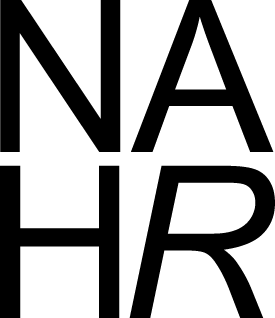








Open air exhibition in Bergamo, Italy, curated by Nature, Art & Habitat (NAHR), in collaboration with the City of Bergamo: Bergamo Botanical Garden 'Lorenzo Rota', Bergamo UNESCO Creative City for Gastronomy (Culture Service and UNESCO.)
Mostra diffusa a cura di Nature Art and Habitat (NAHR), in collaborazione con il Comune di Bergamo: Orto Botanico di Bergamo “Lorenzo Rota”, Bergamo Città Creativa UNESCO per la Gastronomia (Servizio Cultura e UNESCO)
All living organisms depend on each other for their survival. The principle of coexistence is at the heart of an ecological worldview, based on the need to put an end to climate change and save all living species from extinction. Biodiversity is the key to survival and sustainability. Just as everything in nature is interconnected, we recognise the importance of rebuilding crucial ecological connections by considering all living organisms as an integral 'element' within, and not in opposition to, the ecology of places.
On the basis of rediscovering the biodiversity of the city of Bergamo, the Coexistence project seeks to re-engage with the ecological treasures hidden in the mountains of Bergamo's valleys through the exhibition of artworks conceived within the vision of Nature, Art & Habitat (NAHR).
NAHR has been operating in Taleggio Valley since 2015, exploring through research and action this vision that links the micro- and macro-cosmos, culture to nature, and the ecology of the area. The SOIL is a mini-cosmos of life. What we find in our dirt speaks of existence beyond the realm of humanity. Thinking about coexistence at different scales by analyzing the terms BIODIVERSITY and ECOSYSTEM is the concept proposed to the 'artists' invited to produce a body of work that will be reproduced multiple times and displayed across the city of Bergamo, in Northern Italy, making it accessible to a large number of people. The aim is to stimulate the public to reflect on coexistence in its broadest sense: to the extent to which our urban lives are actually nothing else, but one with rurality. As such, the posters become ambassadors of a widespread urban manifesto; calling for the preservation and restoration of biodiversity and raising questions about the coexistence of all living organisms on our planet EARTH.
On the basis of rediscovering the biodiversity of the city of Bergamo, the Coexistence project seeks to re-engage with the ecological treasures hidden in the mountains of Bergamo's valleys through the exhibition of artworks conceived within the vision of Nature, Art & Habitat (NAHR).
NAHR has been operating in Taleggio Valley since 2015, exploring through research and action this vision that links the micro- and macro-cosmos, culture to nature, and the ecology of the area. The SOIL is a mini-cosmos of life. What we find in our dirt speaks of existence beyond the realm of humanity. Thinking about coexistence at different scales by analyzing the terms BIODIVERSITY and ECOSYSTEM is the concept proposed to the 'artists' invited to produce a body of work that will be reproduced multiple times and displayed across the city of Bergamo, in Northern Italy, making it accessible to a large number of people. The aim is to stimulate the public to reflect on coexistence in its broadest sense: to the extent to which our urban lives are actually nothing else, but one with rurality. As such, the posters become ambassadors of a widespread urban manifesto; calling for the preservation and restoration of biodiversity and raising questions about the coexistence of all living organisms on our planet EARTH.
#natura #arte #habitat #cultura #coesistenza #biodiversita’ #ecosistema #suolo #terra #abitanza #montagna
Partendo dalla riscoperta della biodiversità della citta’ di Bergamo il progetto Coesistenza/Coexistence ritesse un dialogo diretto con lo scrigno ecologico della montagna delle Valli bergamasche e lo fa attraverso l’esposizione di opere pensate all’interno della visione di Nature Art and Habitat (NAHR). NAHR agisce in Val Taleggio dal 2015, approfondendo attraverso la ricerca e il fare questa visione che collega il micro- ed il macrocosmo, la cultura alla natura e l’ecologia dei luoghi. Il SUOLO e’ microcosmo di vita e ciò che troviamo nella nostra terra racconta esistenze oltre la nostra umanità’. Pensare la coesistenza a diverse scale attraverso l’analisi dei termini BIODIVERSITA’ e ECOSISTEMA è’ l'idea progettuale proposta agli “artisti” invitati a produrre un lavoro che verrà riprodotto in copie multiple e affisso in Bergamo citta’, permettendone un’ampia fruizione. L’obiettivo è di stimolare il pubblico a riflessioni di coesistenza a diversi livelli, compreso quello di apprezzare quanto le nostre vite urbane non siano in realtà altro, ma un tutt’uno con la ruralità. I poster diventano ambasciatori di un manifesto urbano diffuso; invitano a preservare e a ripristinare la biodiversita’; stimolano domande sulla coesistenza di tutti gli organismi viventi del nostro pianeta TERRA.
Presentazione della mostra diffusa in occasione di FORME 2022 - 22 Ottobre 2022
sala Giuristi, Palazzo della Ragione, Piazza Vecchia 8A, Citta’ Alta, Bergamo
presentano: Claudio Cecchinelli, focal point @Bergamo Città Creativa Unesco; Gabriele Rinaldi, direttore Orto Botanico di Bergamo "Lorenzo Rota";
Gabi Scardi, co-curatrice mostra e Presidente NAHR; Susanna Ravelli, coordinatrice mostra e socia di NAHR.
La registrazione dell’evento e’ disponibile QUI
sala Giuristi, Palazzo della Ragione, Piazza Vecchia 8A, Citta’ Alta, Bergamo
presentano: Claudio Cecchinelli, focal point @Bergamo Città Creativa Unesco; Gabriele Rinaldi, direttore Orto Botanico di Bergamo "Lorenzo Rota";
Gabi Scardi, co-curatrice mostra e Presidente NAHR; Susanna Ravelli, coordinatrice mostra e socia di NAHR.
La registrazione dell’evento e’ disponibile QUI

Emilio Fantin, Italy
with
The theme of coexistence is particularly dear to me and echoes another theme, that of conscience. Both of these words use the suffix "co" which I interpret as a contraction of "con" which means “with”. I called into question "The singular plural being" by Jean Lac Nancy, a verse of the immense Rilke and a quotation from the great Jimmie Dhuram. To you the task and I hope for the pleasure of reconnecting concepts, verses and visions in the form of coexistence.
Emilio Fantin creates spaces for participation where the educational aspect is combined with the artistic one. In his works he connects art with other fields of knowledge. He continues his research work independently or in collaboration with other independent and institutional bodies.
with
The theme of coexistence is particularly dear to me and echoes another theme, that of conscience. Both of these words use the suffix "co" which I interpret as a contraction of "con" which means “with”. I called into question "The singular plural being" by Jean Lac Nancy, a verse of the immense Rilke and a quotation from the great Jimmie Dhuram. To you the task and I hope for the pleasure of reconnecting concepts, verses and visions in the form of coexistence.
Emilio Fantin creates spaces for participation where the educational aspect is combined with the artistic one. In his works he connects art with other fields of knowledge. He continues his research work independently or in collaboration with other independent and institutional bodies.
con
Il tema della coesistenza mi è particolarmente caro ed echeggia un altro tema, quello della coscienza.
Ambedue queste parole si avvalgono del suffisso “co" che interpreto come contrazione di “con”. Ho chiamato in causa "L’essere singolare plurale" di Jean Lac Nancy, un verso dell’immenso Rilke e una citazione dal grande Jimmie Dhuram. A voi il compito e spero il piacere di ricollegare concetti, versi e visioni in forma di coesistenza.
Emilio Fantin crea spazi di partecipazione dove l’aspetto formativo si coniuga con quello artistico. Nei suoi lavori mette in rapporto l’arte con altri campi del sapere. Continua il suo lavoro di ricerca autonomamente o in collaborazione con altri organismi indipendenti e istituzionali.
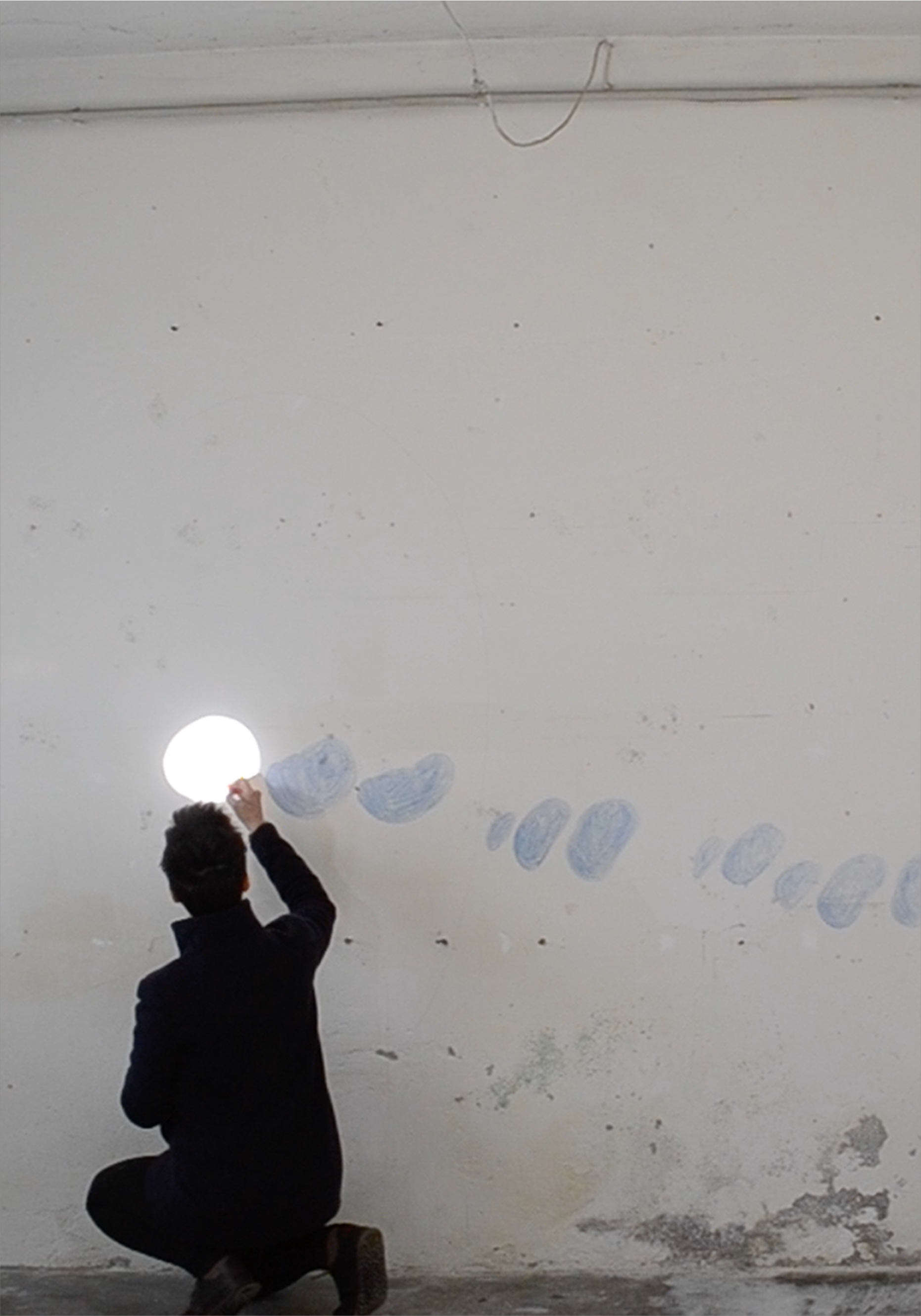
Emma Ciceri, Italy
,
Respiro Sole
I chase the sun with a brush, I paint traces of these encounters on a wall.
The artist writes: "I believe in the encounter between images. I’ve been looking for years at the individual inside the crowds looking for possibilities for close observation of people, of their behavior. I reconsidered many images, starting from the encounter with each of them I practiced erasure to make room for the void and underline the essential. I train the amazement and the look looking for minimal phenomena in the daily reality that we have in itself the infinite, I try to tell them".
Emma Ciceri (1983), was born in Bergamo, where she lives and works.
She has joined the artistic research teaching at some Academies of Fine Arts, now she teaches in high school. Her work have been exhibited in several solo exhibitions, including: Respiro Sole (A Ico), Galleria Riccardo Crespi, Milan (2019); Almerino Vola, Galleria Riccardo Crespi, Milan (2016), EKAM VAS SUTRA / VI ASPETTO DOMANI, Galleria Luka, Pola, 2015); Zones, Institute of Contemporary Art @ Gallery of Accademia Moderna, Zagreb (2015). Recent group shows include GestoZero, Ex Chiesa di Santa Maria Maddalena, Bergamo (2021), Premio Cairo, Palazzo Reale, Milan (2019).
,
Respiro Sole
I chase the sun with a brush, I paint traces of these encounters on a wall.
The artist writes: "I believe in the encounter between images. I’ve been looking for years at the individual inside the crowds looking for possibilities for close observation of people, of their behavior. I reconsidered many images, starting from the encounter with each of them I practiced erasure to make room for the void and underline the essential. I train the amazement and the look looking for minimal phenomena in the daily reality that we have in itself the infinite, I try to tell them".
Emma Ciceri (1983), was born in Bergamo, where she lives and works.
She has joined the artistic research teaching at some Academies of Fine Arts, now she teaches in high school. Her work have been exhibited in several solo exhibitions, including: Respiro Sole (A Ico), Galleria Riccardo Crespi, Milan (2019); Almerino Vola, Galleria Riccardo Crespi, Milan (2016), EKAM VAS SUTRA / VI ASPETTO DOMANI, Galleria Luka, Pola, 2015); Zones, Institute of Contemporary Art @ Gallery of Accademia Moderna, Zagreb (2015). Recent group shows include GestoZero, Ex Chiesa di Santa Maria Maddalena, Bergamo (2021), Premio Cairo, Palazzo Reale, Milan (2019).
Respiro Sole
Inseguo il sole con un pennello, dipingo tracce di questi incontri su un muro. Scrive l’artista: “Credo nell’incontro tra le immagini. Ho guardato per anni il singolo dentro le folle cercando possibilità per un’osservazione ravvicinata delle persone, dei loro comportamenti. Ho ripensato molte immagini, partendo dall’incontro con ognuna di esse ho praticato la cancellatura per fare spazio al vuoto e sottolinearne l’essenziale. Alleno
lo stupore e lo sguardo cercando fenomeni minimi nella realtà quotidiana che abbiamo in sé l’infinito, provo a raccontarli”.
Emma Ciceri (1983), è nata a Bergamo, dove vive e lavora. Ha affiancato alla ricerca artistica l’insegnamento presso alcune Accademie di Belle Arti, ora insegna al liceo. Le sue opere sono state esposte in molteplici mostre personali, fra cui: Respiro Sole (A Ico), Galleria Riccardo Crespi, Milano (2019); Almerino Vola, Galleria Riccardo Crespi, Milano (2016), EKAM VAS SUTRA / VI ASPETTO DOMANI, Galleria Luka, Pola, 2015); Zones, Institute of Contemporary Art @ Gallery of Accademia Moderna, Zagabria (2015). Tra le collettive recenti: GestoZero, Ex Chiesa di Santa Maria Maddalena, Bergamo (2021), Premio Cairo, Palazzo Reale, Milano (2019).
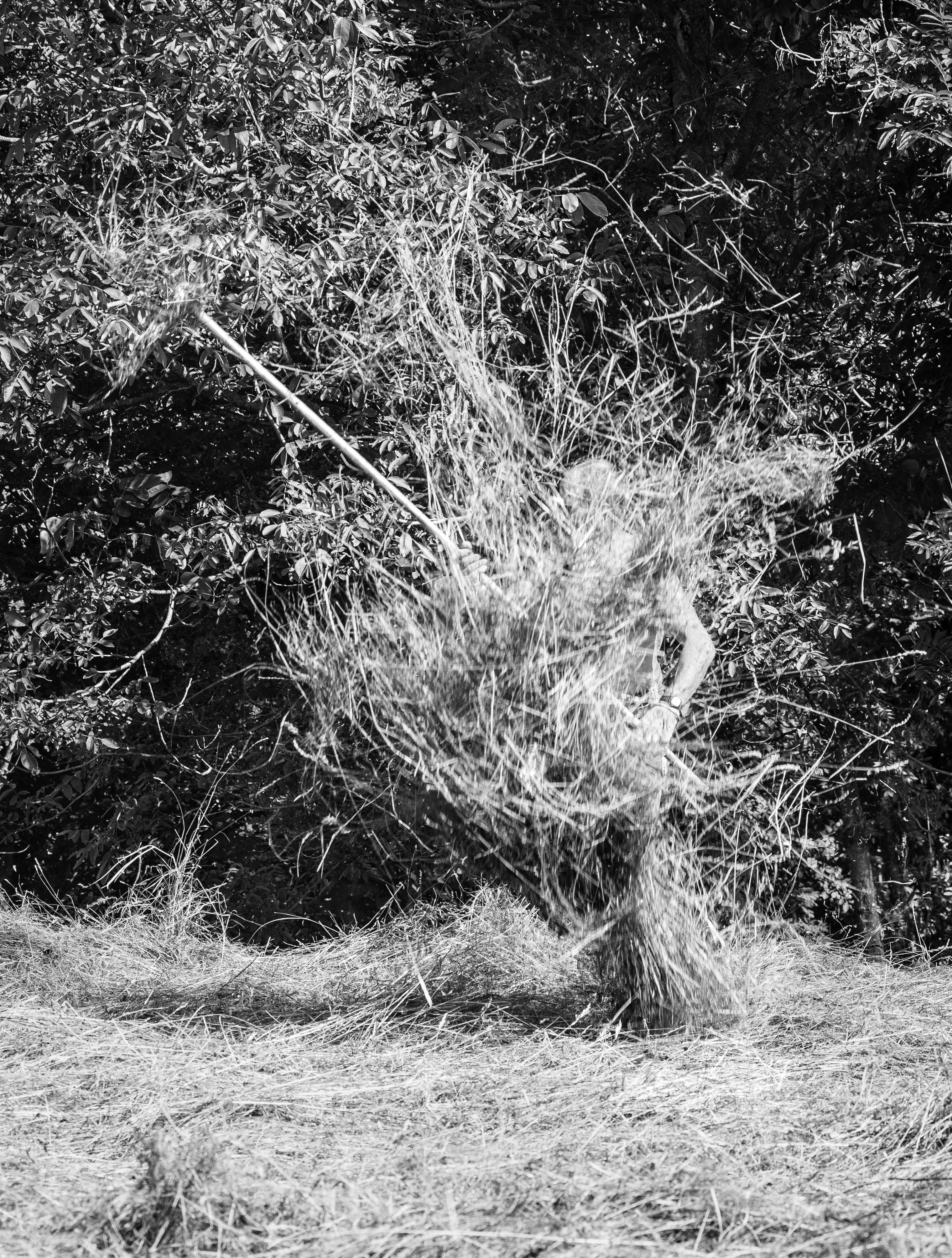
Juan Barte, Spain
The harvest, the people and the masks
The Gap is Narrow project tries to bridge the gap between images and objects through a bio-inspired process that results in a perfect symbiosis between the natural constituents of the photography subjects and the actual photographs. The resulting photographs go beyond representation and metaphor, merging culture and nature.
Juan Barte’s working process gives the pictures a natural intimacy that denies the audience the mere observer’s safe distance, all the while portraying a more complex and diverse representation of the world. Barte relays heavily on instinct and its ability to communicate with the subject in an empathic and spontaneous way.
The harvest, the people and the masks
The Gap is Narrow project tries to bridge the gap between images and objects through a bio-inspired process that results in a perfect symbiosis between the natural constituents of the photography subjects and the actual photographs. The resulting photographs go beyond representation and metaphor, merging culture and nature.
Juan Barte’s working process gives the pictures a natural intimacy that denies the audience the mere observer’s safe distance, all the while portraying a more complex and diverse representation of the world. Barte relays heavily on instinct and its ability to communicate with the subject in an empathic and spontaneous way.
Il raccolto, la gente e le maschere
Il progetto The Gap is Narrow cerca di colmare il divario tra immagini e oggetti attraverso un processo di ispirazione biologica che porta a una perfetta simbiosi tra i costituenti naturali dei soggetti fotografici e le fotografie vere e proprie. Le fotografie risultanti vanno oltre la rappresentazione e la metafora, fondendo cultura e natura.
Il processo di lavoro di Juan Barte conferisce alle immagini un'intimità naturale che nega al pubblico la distanza di sicurezza del mero osservatore, ritraendo al contempo una rappresentazione più complessa e diversificata del mondo. Barte si basa molto sull'istinto e sulla sua capacità di comunicare con il soggetto in modo empatico e spontaneo.

Meri Gorni, Italy
Nadym
Black and white photograph 20x30 cm. on paper. Nadym is the name of the last village on the edge of the great steppe I imagined feeling the nature of the place: the sound of the wind, the creaking of plants, the presence of wolves, through a hen in my arms; perceiving through her body, the remoteness. Try to discover what it means to hold a hen in your arms!
In Meri Gorni’s drawings, photographs, performances and video there is always a word, a phrase, a concept linked to reading and writing since for her drawing and writing have the same roots. For more than twenty years, she has been building up a visual vocabulary where each word corresponds to a video.
Nadym
Black and white photograph 20x30 cm. on paper. Nadym is the name of the last village on the edge of the great steppe I imagined feeling the nature of the place: the sound of the wind, the creaking of plants, the presence of wolves, through a hen in my arms; perceiving through her body, the remoteness. Try to discover what it means to hold a hen in your arms!
In Meri Gorni’s drawings, photographs, performances and video there is always a word, a phrase, a concept linked to reading and writing since for her drawing and writing have the same roots. For more than twenty years, she has been building up a visual vocabulary where each word corresponds to a video.
Nadym
Nadym, 1996
Fotografia in bianco e nero 20x30 cm su carta Nadym è il nome dell’ultimo villaggio ai margini della grande steppa. Ho immaginato di sentire la natura di quel luogo: il rumore del vento, lo scricchiolio delle piante, la presenza dei lupi tramite una gallina nelle mie braccia; percepire attraverso il suo corpo, la lontananza. Provate a scoprire cosa significa tenere in braccio una gallina!
Nei disegni, fotografie, performance e video di Meri Gorni ci sono sempre una parola, una frase, un concetto legato alla lettura e alla scrittura perché disegnare e scrivere per lei hanno la stessa radice. Da più di venti anni è impegnata a costruire un vocabolario visivo dove ad ogni parola fa corrispondere un video.
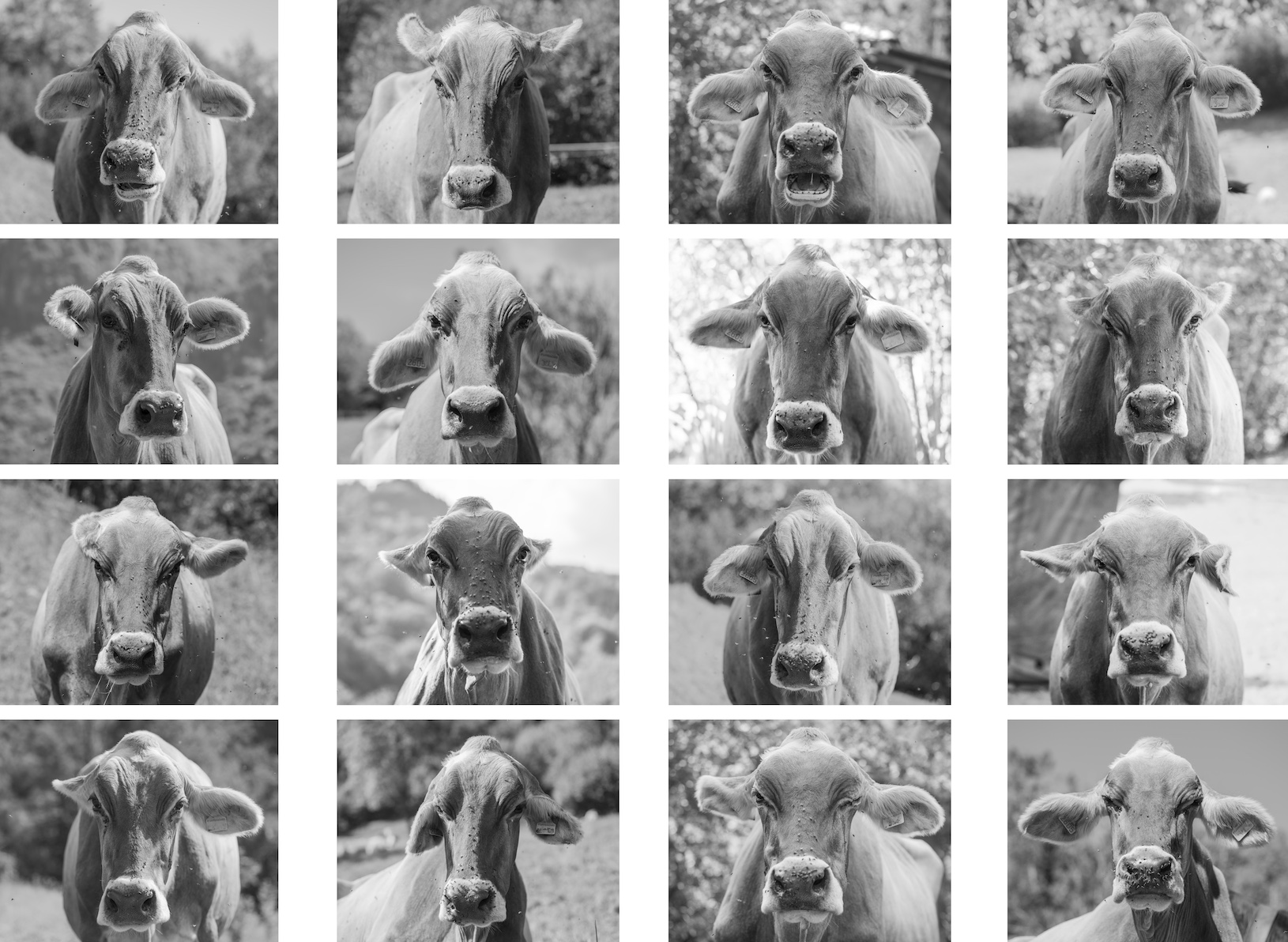
Patrick Lopez Jaimes, Mexico
M
‘M’, part of the series ‘Irei/Following’, attempts to explore the personality, mood and individuality of the cow M who lives in the Val Taleggio. For a period of 4 weeks I followed M, subject to her own time, space and will (or lack thereof) to collaborate.
Patrick L. Jaimes is a visual artist born and based in Mexico. His work focuses on human-animal relationships, power dynamics and the blurry dichotomy nature / artifice.
M
‘M’, part of the series ‘Irei/Following’, attempts to explore the personality, mood and individuality of the cow M who lives in the Val Taleggio. For a period of 4 weeks I followed M, subject to her own time, space and will (or lack thereof) to collaborate.
Patrick L. Jaimes is a visual artist born and based in Mexico. His work focuses on human-animal relationships, power dynamics and the blurry dichotomy nature / artifice.
M
'M', parte della serie 'Irei/Following', cerca di esplorare la personalità, l'umore e l'individualità della mucca M che vive in Val Taleggio. Per un periodo di 4 settimane ho seguito M, soggetto al suo tempo, spazio e volontà (o mancanza di esso) di collaborare.
Patrick L. Jaimes è un artista visivo nato e con sede in Messico. Il suo lavoro si concentra sulle relazioni uomo-animale, le dinamiche di potere e la natura indistinta dicotomia/ artificio.
Sophia Aitken, USA
Pollen
In this performance piece, the artist takes on a human-flower hybrid form. In a ritual of gratitude, she offers honey and pollen from her hands to a hive. This intimate encounter symbolizes a return to a more sacred relationship between humans and bees, responding to the existential crisis of a declining honey bee population. With a performance art practice grounded in ecology and the multispecies experience, Sophia’s artworks present the human in a state of becoming. Responding to climate change and late stage capitalism, these performances propose posthuman identities that embrace multiplicity, symbiosis and interspecies kinship for the partial recuperation of the planet.
Sophia has a B.A. from New College of Florida (2016) and a M.A. in Production and Research in Art from the University of Granada in Spain (2021). She is currently enrolled at UT Austin pursuing graduate studies in Community & Regional Planning.
Photo by Hemmie Lindholm
Pollen
In this performance piece, the artist takes on a human-flower hybrid form. In a ritual of gratitude, she offers honey and pollen from her hands to a hive. This intimate encounter symbolizes a return to a more sacred relationship between humans and bees, responding to the existential crisis of a declining honey bee population. With a performance art practice grounded in ecology and the multispecies experience, Sophia’s artworks present the human in a state of becoming. Responding to climate change and late stage capitalism, these performances propose posthuman identities that embrace multiplicity, symbiosis and interspecies kinship for the partial recuperation of the planet.
Sophia has a B.A. from New College of Florida (2016) and a M.A. in Production and Research in Art from the University of Granada in Spain (2021). She is currently enrolled at UT Austin pursuing graduate studies in Community & Regional Planning.
Photo by Hemmie Lindholm
Polline
In questa performance, l'artista assume una forma ibrida uomo-fiore. In un rituale di gratitudine, offre miele e polline dalle sue mani a un alveare. Questo incontro intimo simboleggia un ritorno a un rapporto più sacro tra uomo e api, in risposta alla crisi esistenziale di una popolazione di api in declino.
Con una pratica di performance art fondata sull'ecologia e sull'esperienza multispecie, le opere di Sophia presentano l'umano in uno stato di divenire. In risposta al cambiamento climatico e al capitalismo in fase avanzata, queste performance propongono identità postumane che abbracciano molteplicità, simbiosi e parentela interspecie per il parziale recupero del pianeta.
Sophia ha una laurea al New College of Florida (2016) e un Master in Produzione e Ricerca in Arte presso l'Università di Granada in Spagna (2021). Attualmente è iscritta all'UT Austin e sta proseguendo gli studi universitari in Pianificazione Comunitaria e Regionale.
Foto di Hemmie Lindholm
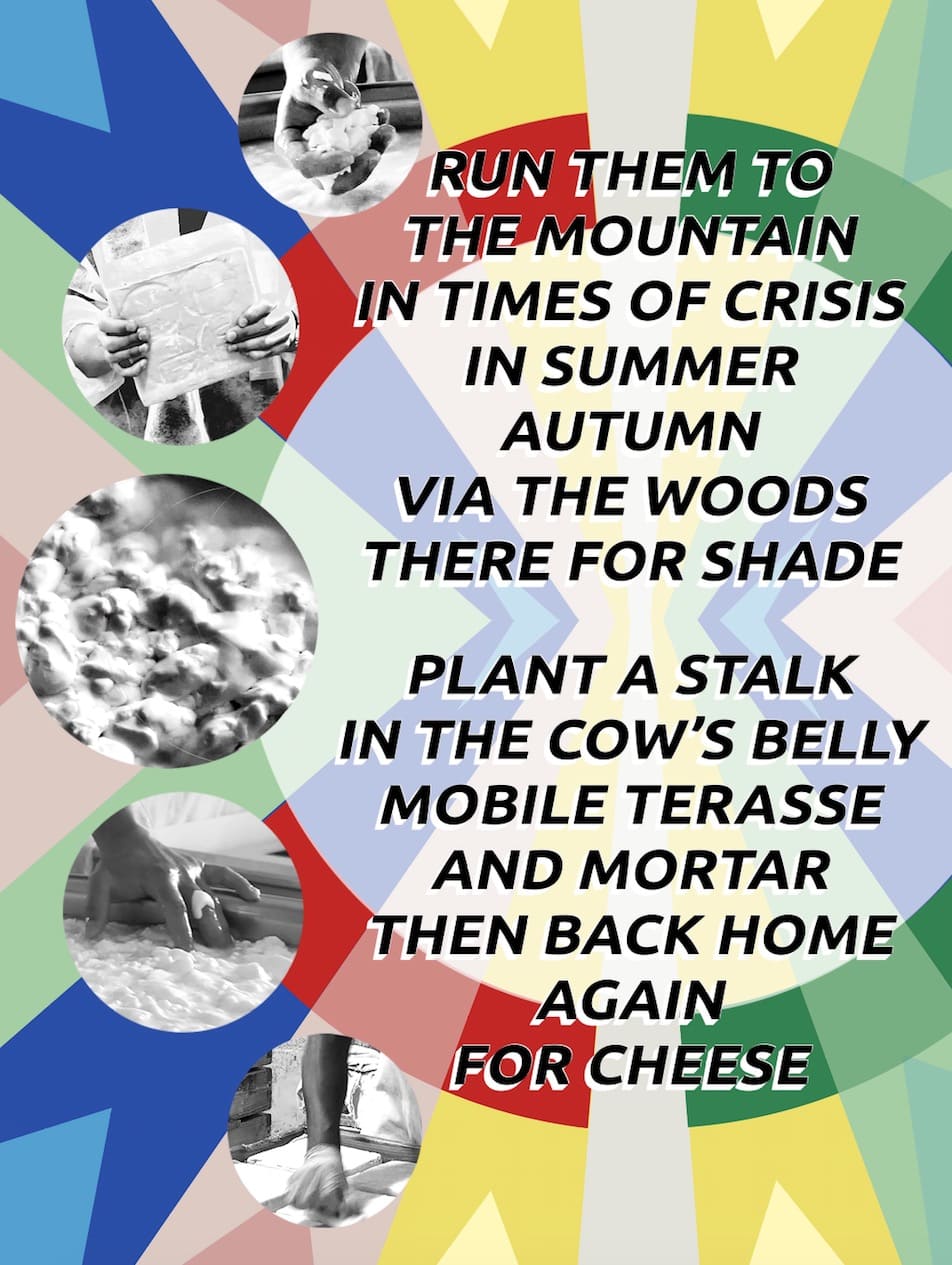
Simon Eales, Brent Cox, Courtlin Byrd
Australia, USA
Cheese of Many Colors
We read a poem about cows and their herders, set against a metaphoric background of societal breakdown. Mountains are a refuge that heals with its grand timescale, and cheese is one that does so through its simplicity and connectivity: mountain>grass>cow>milk>hands>process>solid>mouth.
Simon, Brent, and Courtlin are international artists working with text, film, design, and live experience. Together, they work on the Topological Poetics Research Institute, Ecopoetry Workshop, Buried Text Podcast, and the Georges Bataille Reading Group.
Australia, USA
Cheese of Many Colors
We read a poem about cows and their herders, set against a metaphoric background of societal breakdown. Mountains are a refuge that heals with its grand timescale, and cheese is one that does so through its simplicity and connectivity: mountain>grass>cow>milk>hands>process>solid>mouth.
Simon, Brent, and Courtlin are international artists working with text, film, design, and live experience. Together, they work on the Topological Poetics Research Institute, Ecopoetry Workshop, Buried Text Podcast, and the Georges Bataille Reading Group.
Formaggio di molti colori
Leggiamo una poesia sulle mucche e i loro pastori, ambientata in un contesto metaforico di disgregazione sociale. Le montagne sono un rifugio che guarisce con la sua grande scala temporale e il formaggio è uno di quelli che lo fa attraverso la sua semplicità e la connettività: montagna>erba>mucca>latte>mani>processo>solida>bocca.
Simon, Brent e Courtlin sono artisti internazionali che lavorano con testi, film, design ed esperienze dal vivo. Insieme lavorano al Topological Poetics Research Institute, Ecopoetry Workshop, Buried Text Podcast e al Georges Bataille Reading Group.

Roxanne Korda, UK
Listening to the ground
The artist buried her microphone and recorded the soil. She performed her transcribed soil melodies alongside a series of actions, back to the recorded ground. She is receiving and responding to the audio signals sent by the living soil, finding a new voice and language with which to coexist.
Roxanne is a multidisciplinary soprano, librettist and researcher, working in interdisciplinary theatre and opera. She is a PhD candidate with Royal Birmingham Conservatoire and cofounded the Birmingham based theatre troupe - Infinite Opera.
Photo by Sophia Aitken
Listening to the ground
The artist buried her microphone and recorded the soil. She performed her transcribed soil melodies alongside a series of actions, back to the recorded ground. She is receiving and responding to the audio signals sent by the living soil, finding a new voice and language with which to coexist.
Roxanne is a multidisciplinary soprano, librettist and researcher, working in interdisciplinary theatre and opera. She is a PhD candidate with Royal Birmingham Conservatoire and cofounded the Birmingham based theatre troupe - Infinite Opera.
Photo by Sophia Aitken
Ascoltando il suolo
L'artista ha seppellito il suo microfono e ha registrato il terreno. Ha eseguito le sue melodie del suolo trascritte insieme a una serie di azioni, tornando al suolo registrato. Sta ricevendo e rispondendo ai segnali audio inviati dal suolo vivo, trovando una nuova voce e un nuovo linguaggio con cui convivere.
Roxanne è un soprano, librettista e ricercatore multidisciplinare, che lavora nel teatro e nell'opera interdisciplinari. È dottoranda al Royal Birmingham Conservatoire e ha co - fondato la compagnia teatrale di Birmingham - Infinite Opera.
Foto di Sophia Aitken
NAHR Team: Katarina Sallemova (Graphic design), Sofia della Pace (Translation), Noah Mercier (Web design), Susanna Ravelli (Coordinator), Gabi Scardi and Ilaria Mazzoleni (Curators)
We extend our thank you to all participants and organizers. | Ringraziamo tutti i partecipant* e gli organizzator*
